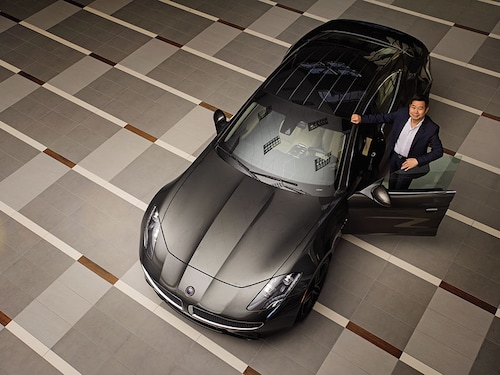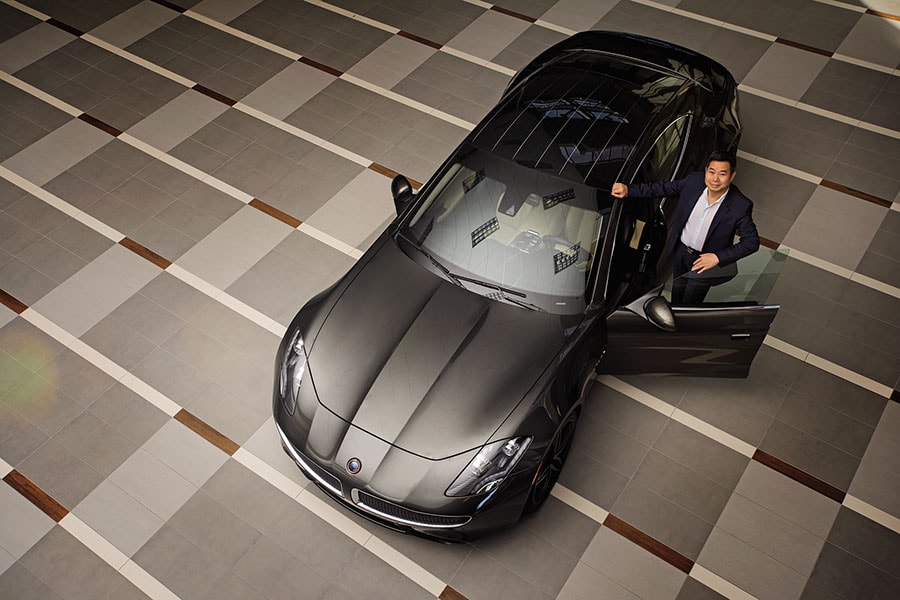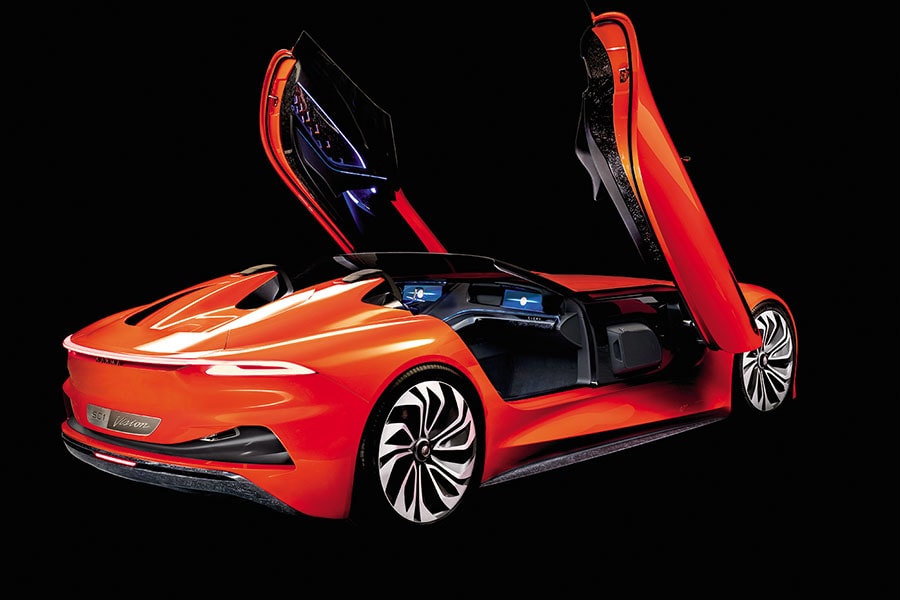Karma: Under a new CEO, the luxury electric-vehicle maker is reincarnating itsel
Will three new models—and a robust customisation programme—finally put it on the road to success?


 In the driver’s seat: CEO Lance Zhou, pictured at Karma Automotive headquarters in Irvine, California, followed his father into the car industry
In the driver’s seat: CEO Lance Zhou, pictured at Karma Automotive headquarters in Irvine, California, followed his father into the car industry
Image: Tim Pannell for Forbes[br]For a company that produces electric vehicles, Karma has been awfully silent lately—and for good reason. The luxury automaker has been undergoing a top-to-bottom overhaul under the direction of its CEO, Lance Zhou.
“We’ve been focussed on building our company and perfecting our craft,” says Zhou, a 25-year industry veteran who took the wheel at Karma in December 2017. He was tasked with treating the then 10-year-old company like a startup and rebuilding it from the ground up. The struggle for Zhou is that this is Karma’s third incarnation in just over a decade—and the second time it has been completely rebuilt.
What is now Karma Automotive began life in 2007 as Fisker Automotive, under the direction of Danish car designer Henrik Fisker, best known for his work on the BMW Z8 and Aston Martin V8 Vantage and DB9.
Backed by a federal loan from the US Department of Energy, Fisker built a sleek, plug-in hybrid sports sedan called the Karma with a starting price of more than $100,000. It attracted notable investors (including the venture capital firm Kleiner Perkins) and celebrity clients such as Leonardo DiCaprio and Justin Bieber. But the car was plagued with mechanical and technical problems and quickly became a severe cash suck for the company. Showstoppers: Karma unveiled the 2020 Revero GT and the SC1 Vision Concept at the Shanghai Auto Show in April[br]Fisker built an estimated 2,450 Karmas in 2011 and 2012, losing at least $35,000 on each one. And despite raising more than $1 billion in private and public financing, Henrik Fisker resigned from the company in March 2013 due to major differences with its board. The automaker filed for bankruptcy eight months later.
Showstoppers: Karma unveiled the 2020 Revero GT and the SC1 Vision Concept at the Shanghai Auto Show in April[br]Fisker built an estimated 2,450 Karmas in 2011 and 2012, losing at least $35,000 on each one. And despite raising more than $1 billion in private and public financing, Henrik Fisker resigned from the company in March 2013 due to major differences with its board. The automaker filed for bankruptcy eight months later.
In 2014, China’s leading auto-component supplier, the Wanxiang Group, acquired Fisker’s remaining assets and trademarks for $150 million. By 2015, the company had been rebranded Karma and its signature vehicle renamed the Revero. Though it featured numerous updates—including a better battery and a new interior—the exterior remained largely the same and was viewed as a carbon copy of the Fisker Karma.
By the time the 52-year-old Zhou assumed control of Karma, the company was desperately in need of an experienced automotive executive. Zhou had the résumé. He began his career as an engineer at one of China’s largest automakers, Dongfeng Liuzhou Motor, in 1992, after earning a master’s in engineering from the country’s Northwestern Polytechnical University and a PhD in engineering management from Nanjing University of Science and Technology. He quickly progressed into sales, marketing and then general management at different auto companies in China and Germany, including top-level positions at Fiat Chrysler, Mercedes and Foton-Daimler.
When Karma came calling, Zhou knew it was a place he could leave his mark on the future of transportation, but it would be a struggle. Not only would he have to move to a new country (America) and work in an unfamiliar automotive segment (he had always been on the pickup-truck side of the business), but he would also be dealing with a new type of power train (fueled by electricity).
He is off to a fast—albeit scattershot—start. Zhou has already transformed the brand from a company that designs and builds luxury hybrid-electric cars to one that strives to be purely electric and license the technology it develops. Among the areas Karma is focusing on are vehicle-to-vehicle communication, advanced infotainment systems and autonomous driving.
He is also emphasising Karma’s ability to customise its vehicles. “Nobody wants to buy a standard product,” he insists. “They want to have something different, something to reflect their status.” Buyers will work directly with Karma designers to co-create a car based on individual taste. That can range from changing the paint colour and souping up the engine to creating a one-of-a-kind vehicle.
In April, Karma revealed three new models at the Shanghai Auto Show. One will replace the current Revero this summer. The 2020 Revero GT, nicknamed the Revero 2.0, will be the first vehicle that’s Fisker-free except for the chassis. The GT has a curvier body with a longer, bulging hood wider fenders front and back and a stunning new interior, including a customisable dashboard and centre console displays. It’s also a hybrid, equipped with a higher-capacity battery pack that powers two electric motors mounted in the rear axle, as well as a more powerful BMW engine that acts as a generator to recharge the battery when needed. Karma expects to build around 500 Revero GT units in its first year of production, with a starting price around $130,000.
The second model is the Karma Pininfarina GT, a collaboration with the legendary Italian coach builder that shows just how much customisation is possible. Pininfarina retained the underpinnings of the Revero GT and handcrafted the body style and interior, offering a sexy alternative to Karma’s design.
The third vehicle Karma debuted in Shanghai was the SC1 Vision Concept, a sleek roadster that represents its electric future. Though details are scarce, the SC1 is a pure EV and will be equipped with a new 5G-ready infotainment system and “humanized” controls that integrate touch, voice, eye and graphical interfaces.
Like Elon Musk, Zhou has overly ambitious mass-market dreams. For this he expects the company to team with a partner in China, one suited to produce cars at a higher rate. Karma has the capacity to build as many as 10,000 vehicles a year at its facility in Moreno Valley, California, though he doesn’t expect production to be near that anytime soon. Zhou plans to establish Karma in the US first before expanding to Europe and the Middle East in 2020 and then Asia by 2021.
“We now have a vision and road map for the company that’s building strong momentum,” Zhou says. “I can confidently say our best days are ahead of us.” Now he just needs some good karma.
First Published: Jul 13, 2019, 10:09
Subscribe Now